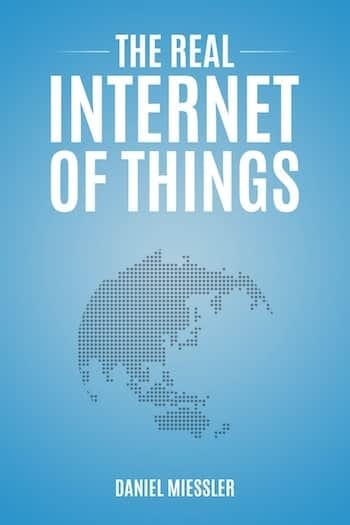The Real Internet of Things: Augmented Reality

These are published chapters from my book The real Internet of Things, published on January 1st, 2017.
Augmented Reality is a particularly important addition to the combination of Daemonization and Digital Assistants, as it will give humans entirely new ways of seeing and interacting with the world.
When you look at a strange person in a non-augmented (NAUG) way, you see only what light bounces off of them. You hear only what sounds they can make themselves.
AUG and NAUG refer to whether someone is enhanced or not by a responsive technology system like a digital assistant. AUG is short for Augmented, and NAUG is short for Non-Augmented. The short and/or spoken versions of these (one syllable) are "Og" and "Nog". An example of usage would be to have someone ask after hearing of a high score on a history test, "Wow, was that aug or naug?"
With daemonization, objects will have extraordinary amounts of data available about them, but, as discussed, humans will be unable to innately interpret that data.
Using the combination of visual, audio, and other sensory enhancement, DAs will use various services (business Daemons/APIs) to create enhanced overlays onto the world. These overlays, or filters, or skins, will communicate context and capabilities available in the surrounding reality that humans would not otherwise be able to see.
Two things are critical for optimal Augmented Reality (AR) experience: Context, and Subtlety.
With context, DAs will understand the preferences, mood, and intentions of their principals, and they will use this to decide what should be presented to the user through various means, e.g., the visor/lens, temperature adjustments, vibrations, audibly through their earpieces, or even potentially via smell/taste.
Subtlety refers to how the information is conveyed. It will obviously be possible to overlay giant red text on top of a building that reads "CLOSED", but a simple reddish hue, or a black and white overlay will no-doubt be preferred. Many companies will emerge that excel at producing the best possible experiences of this kind, which will require a combination of creativity, design, and UI/UX expertise.
Now imagine the various contexts that can exist as one moves through life in a given day, and the type of augmented interfaces that can accompany those contexts.
Looking at a street and having all open shops be green.
Seeing all highly rated restaurants with a star above them.
Hearing a musical chime when you talk to someone who is a musician.
Hearing a backdrop of scary music when you enter a dangerous area.
Seeing a wordcloud on someone’s chest representing what others think of them.
Seeing a truth indicator as a red or green field of vision halo while talking to a stranger.
Being able to follow a holographic person or familiar/animal as a form of guided walking directions.
A mood indicator for the room you’re in.
Different music accompanies proximity with people based on their relationship status.
A Cupid icon floats above romantic matches.
Best friends or couples who are together are seen with a "besties" or "lovers" label near them.
There will be thousands of these, all made possibly by the combination of these components:
Everything is daemonized and displaying data about themselves.
Your DA knows your preferences, your current context (happy, lonely, angry, sad, etc.) and is parsing all those daemons.
Based on the intersection between those two, your DA uses various AR services (which are business services themselves) to display a contextually rich overlay upon the world.
Companies will specialize, in other words, in making the perfect overlay on a person when they are a romantic match. It’s subtle, elegant, and you at once barely notice it and get extreme value from it. And companies will compete to be the AR interface used by DAs for that purpose. And it will be the same for restaurants, detecting danger in an environment, or displaying food on a menu.
The way you see, and can interact with, the world will be constantly augmented in subtle ways based on information your DA knows about you and the environment. And you’re not doing anything but going about your day.
Summary
Businesses will be competing to artfully display information about reality as AR overlays.
These overlays are populated by object daemons combined with the preferences and context of the principal.
Your DA determines based on preferences and context which filters to use at any given time.
So with this discussion of Augmented Reality, we’ve now combined the three core concepts and technologies that make up the main changes to Interface:
The Universal Daemonization of all objects.
Digital Assistants that interact with technology on our behalf.
Augmented Reality that adjusts how we perceive and interact with the world based on our preferences and context.
Now let’s talk about some of the infrastructure that we’ll need to make it all work.